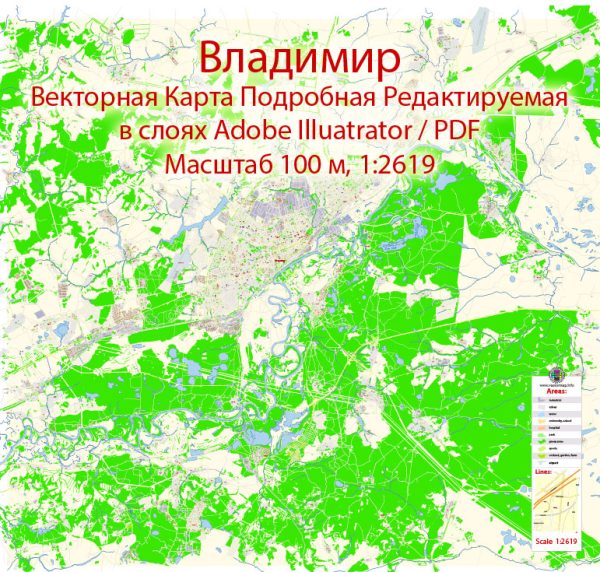Vladimir, located in the Vladimir Oblast region of Russia, is a city with a rich history that dates back over a millennium. It has played a significant role in Russian history and culture. Here is an overview of key phases in the history of Vladimir’s urban development:
Early History:
- Foundation (12th Century):
- Vladimir was founded in 1108 by Prince Vladimir Monomakh, making it one of the oldest Russian cities. It served as the capital of the Grand Duchy of Vladimir-Suzdal, an early East Slavic state.
Golden Age of Vladimir-Suzdal:
- Assumption Cathedral (12th Century):
- During the 12th century, the city became an important center of political, cultural, and religious life. The Assumption Cathedral, completed in 1158, became a symbol of the city’s architectural and spiritual significance.
- Invasion of the Mongols (13th Century):
- Vladimir faced the Mongol invasion in the 13th century. The city was sacked by the Mongols in 1238, marking a challenging period in its history.
Moscow’s Rise and Vladimir’s Decline:
- Transfer of Capital (14th Century):
- In the 14th century, the capital of the Grand Duchy shifted to Moscow under the rule of Ivan Kalita. Vladimir’s influence declined, and it became a provincial center.
Imperial Russia:
- Architectural Heritage (17th Century):
- Despite its diminished political importance, Vladimir retained its architectural and cultural significance. The city’s historic buildings, including churches and monasteries, are representative of Russian medieval architecture.
Soviet Era:
- Industrialization and Modernization:
- In the Soviet era, Vladimir experienced industrialization and modernization. The city’s economy was diversified, and new industries were established.
Post-Soviet Era:
- Preservation Efforts:
- In the post-Soviet era, there has been a renewed focus on preserving Vladimir’s historical and cultural heritage. Many of the city’s medieval monuments have been designated as UNESCO World Heritage Sites.
Notable Landmarks:
- Golden Gate (12th Century):
- The Golden Gate, built in 1164, served as the main entrance to the city. It was part of the fortifications and is one of the best-preserved examples of medieval Russian military architecture.
- Dormition Cathedral (Assumption Cathedral):
- The Dormition Cathedral, with its distinctive golden domes, is a UNESCO-listed site and a prime example of Vladimir-Suzdal architecture.
- Saint Demetrius’ Cathedral (12th Century):
- Saint Demetrius’ Cathedral is another notable religious structure known for its architecture and historical significance.
- Vladimir’s Monasteries:
- The city is home to several monasteries, including the Nativity Monastery and the Holy Rosary Convent, contributing to its spiritual and cultural character.
Contemporary Vladimir:
- Cultural Hub:
- Vladimir continues to be a cultural hub with museums, theaters, and events that celebrate its history and traditions.
- Education and Economy:
- Vladimir is home to educational institutions and has a diverse economy that includes manufacturing, education, and tourism.
Vladimir’s urban development has been shaped by its early prominence as a medieval capital, its resilience through challenging periods, and its commitment to preserving its cultural and architectural heritage. The city stands as a testament to Russia’s rich historical tapestry.


 Author: Kirill Shrayber, Ph.D.
Author: Kirill Shrayber, Ph.D.